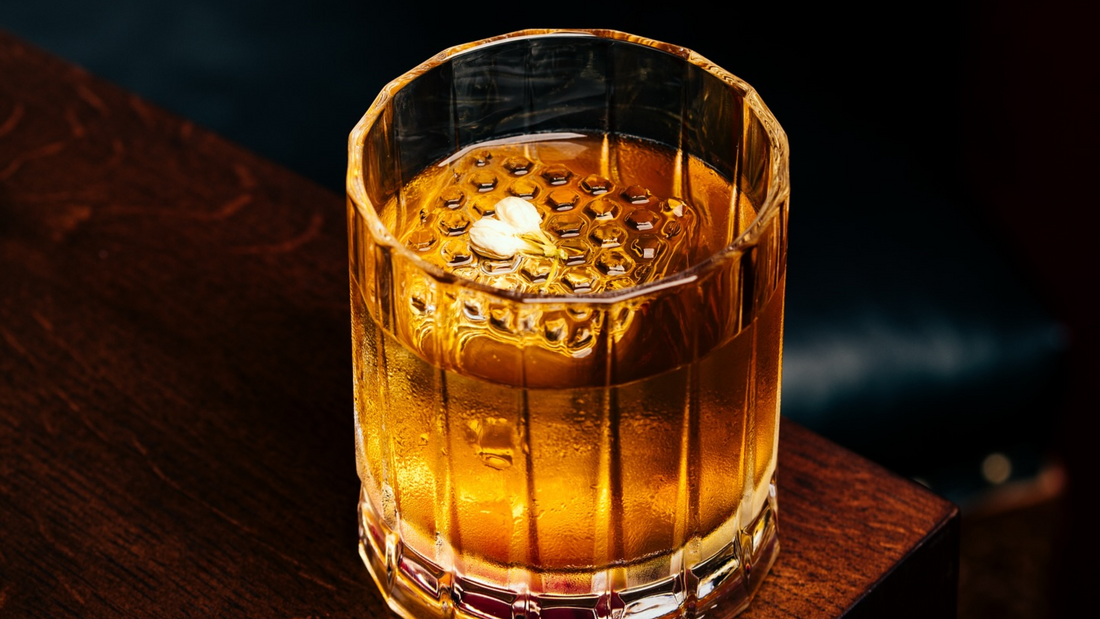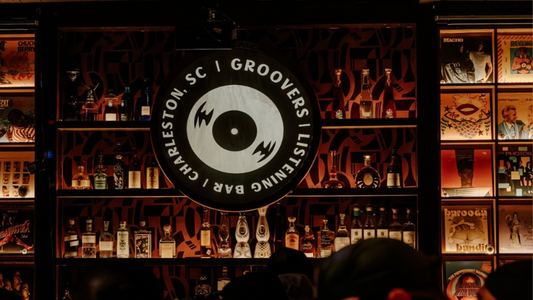
The Geometry of the Whisky Cube: How Ice Shapes the Listening Experience
Share
By Rafi Mercer
Every listening bar has its own signature sound, but look closely and you’ll find they also have their own signature glass. Not just the vessel, but the ice within it. A single sphere, a block cut like sculpture, or a scatter of irregular shards. Ice is more than frozen water. It is the silent architect of the glass, shaping how whisky tastes, how it feels on the tongue, and even how it sounds when you pause to listen.
The Japanese perfected the art of the whisky cube. In Tokyo’s finest bars, you’ll see a bartender take a chisel to a block of crystal-clear ice, carving it slowly into a perfect shape. The ritual is patient, deliberate, hypnotic. Each strike echoes, each shaving falls like a soft percussion. By the time the cube slides into the glass, the drink has already been transformed. It is not yet poured, but already heightened by care.
Why such attention? Because ice changes everything. A large cube melts slower, keeping dilution under control while maintaining chill. A sphere exposes less surface to the liquid, preserving integrity longer. Crushed ice, on the other hand, bleeds into the whisky quickly, lifting sweetness but muting depth. These decisions are not incidental. They are choices of architecture and intention, like selecting the right speakers or placing them at the right height.
In a listening bar, the alignment between sound and glass is more profound than it first appears. A slow-melting cube mirrors the patience of vinyl. A perfect sphere echoes the symmetry of a well-set room. Even the clink of ice against crystal has its place. It punctuates silence between tracks, a small acoustic flourish that reminds us of presence.
Think of the opening scene of Sofia Coppola’s Lost in Translation. Bill Murray sits in a Tokyo bar, whisky in hand, the ice glowing like sculpture beneath amber liquid. The silence around him is as thick as the drink. That image, instantly iconic, was less about the brand and more about the geometry of glass, light, and ice. It showed whisky not as a drink, but as a lens.
At home, you can adopt this same sensibility. Invest in a simple mould that produces large, clear cubes or spheres. Clarity matters, because cloudy ice carries impurities that break down too quickly. Clear ice melts with elegance, slowly and evenly. Before pouring, hold the cube to the light, see how it refracts the room. Then place it into the glass and listen for the chime. Add your pour gently, and hear how the liquid greets the ice. These are not just small details, they are the beginnings of ritual.
Pair this with your choice of record, and the resonance becomes tangible. A cube sinking into Nikka Coffey Grain might sit alongside the elegant drift of Bill Evans’ Waltz for Debby. A sharp shard in a highball of Hibiki could underscore the urgency of Fela Kuti’s Expensive Shit. Ice dictates pace, and so too does sound.
There is also a sensory choreography in play. Cold slows flavour, just as silence heightens listening. As the cube begins to melt, flavours bloom in stages. A sip ten minutes in is not the same as a sip taken at first pour. Time becomes part of taste. This mirrors the way an album reveals itself differently on each side. The drink and the record evolve together, parallel narratives unfolding.
In the finest listening bars, these parallels are rarely spoken aloud, but they are felt. Bartenders and DJs alike understand that the details matter. A cube carved with reverence carries the same weight as a needle dropped with care. Both gestures ask for patience. Both gestures remind us that ritual elevates the ordinary.
The next time you pour a dram, do not rush. Select your ice, select your record, and give each its own silence before beginning. You’ll find that the geometry of the cube and the geometry of sound speak to one another. One cools, one resonates, and both transform.
Rafi Mercer writes about the spaces where music matters. For more stories from Tracks & Tales, subscribe here, or click here to read more.






